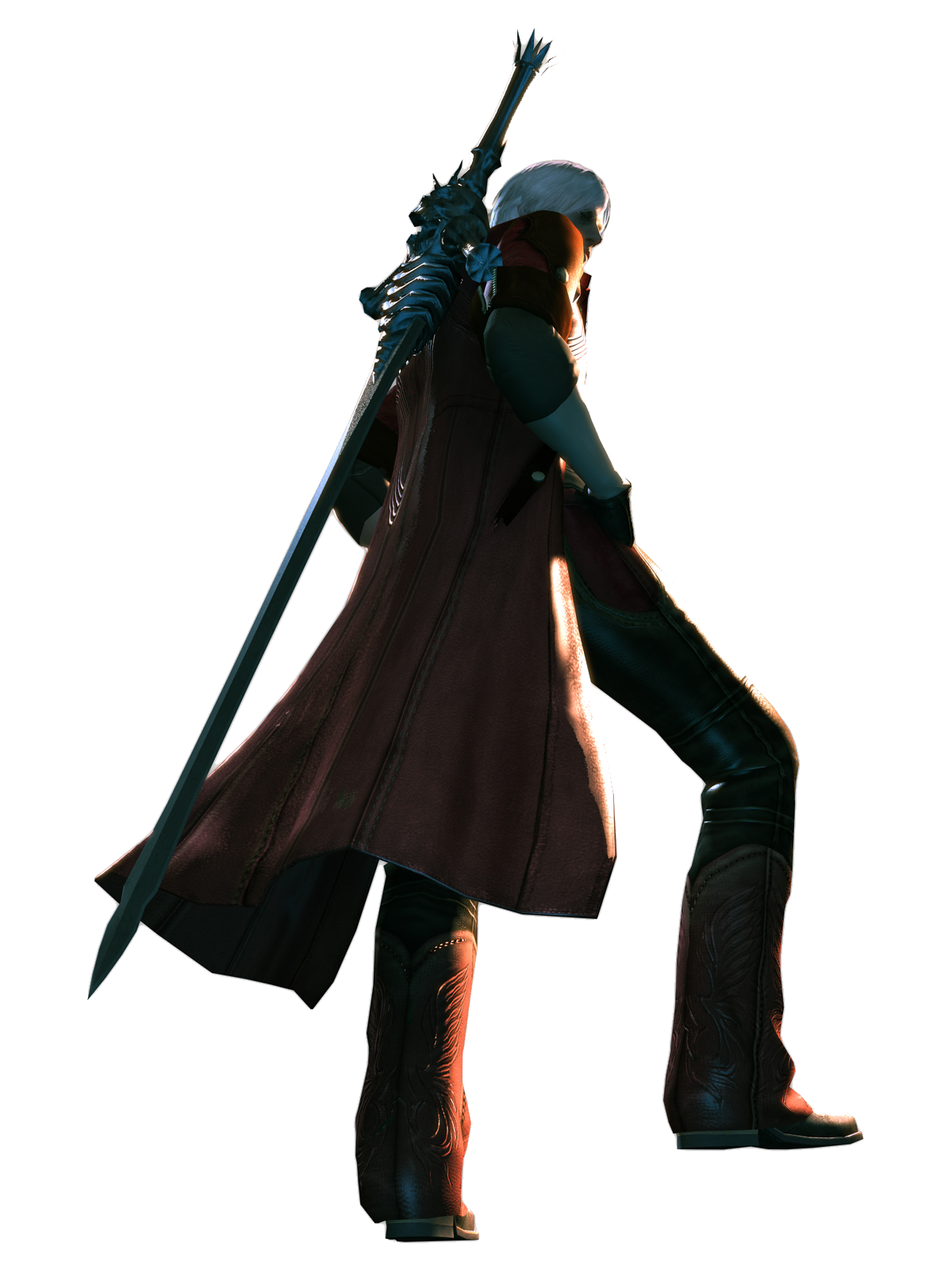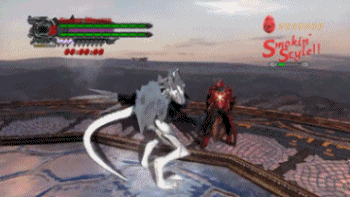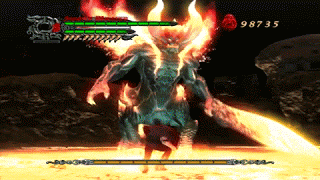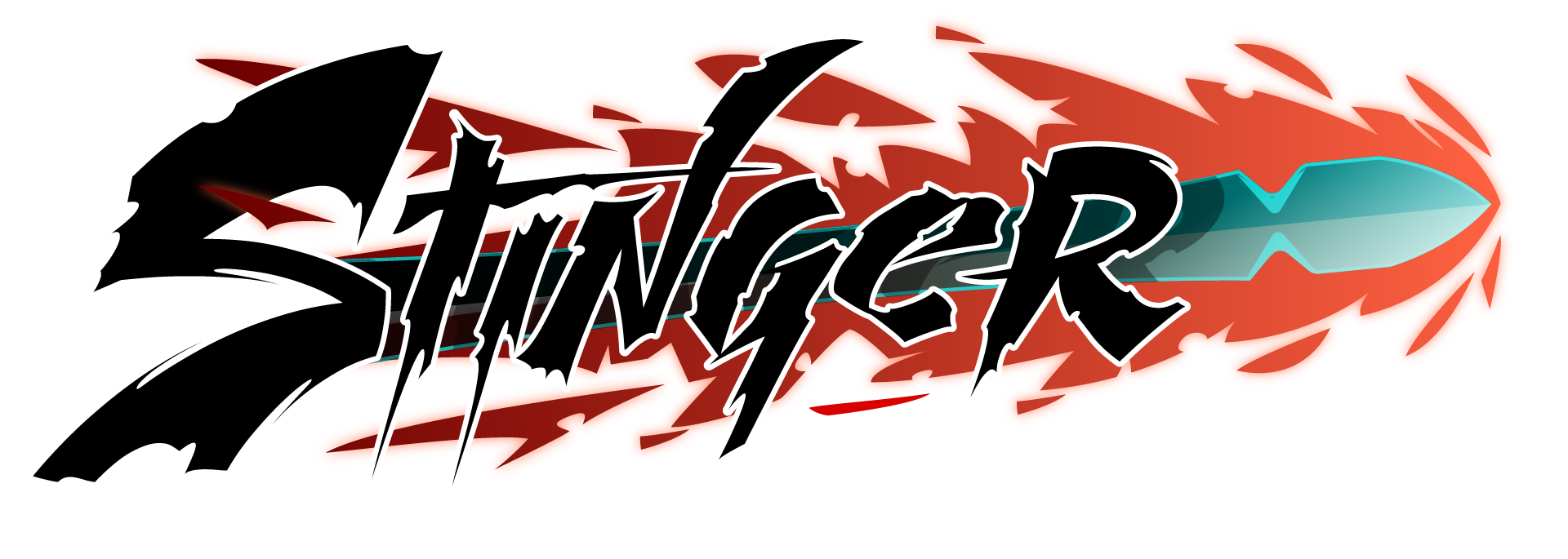You are surrounded. The attackers are everywhere, angels reign down from the skies while the demons crawl up from the depths below. Bullets, energy blasts, axes and spears fly…Nowhere is safe. You have but a split second to decide what you’re going to do and how you’re going to dispatch of your foes. That thoughtprocess can be one of the most exhilarating moments. The choices that ran through your head showed a deep array of possibilities, but what exactly is Depth? And why is it often confused with another term: Complexity?


Let’s watch them square off:
Depth and Complexity
In a sense, Action games are a curious genre. Instead of being built around that single playthrough for maximum enjoyment, the meat of the games tends to come from frequent revisits. They up the challenge on higher settings in new ways, twist the structure around and promote experimentation above all else.
Games such as these urge you to dig deeper constantly. As such, if there exists a single word that describes the heart of the Action Hack and Slash genre, it is depth. Depth allows for each replay to be interesting and a learning experience. Within a single moment the player gets to make choices based on the moveset of the player character. These can be defensive, offensive, crowd control and more; all with differing forms and outcomes that lead to new “blink and you’ll miss it” spaces to make your next choice, usually without even knowing it.
Eventually you’ll be instinctively experimenting with options and finding perfect, but at times also risky, solutions to an enemy encounter or scenario. A single different choice can have a huge impact on the result of the fight. This is the depth in an action game. It is defined by the meaningful options you have and their differing uses and applications.
Depth, in a sense, is an answer to a question:
why should I use these attacks and abilities, instead of just killing my foe?
Another part that gives the genre its lifeblood is the ways in which we use the mechanics. The combinations of the attacks, controls, precision and difficulty of the inputs. More options heighten the possibilities and thus the complexity. The aim of combat complexity is to not focus on each move having a separate goal, instead they are variations of the same concept. This can be tied to frame-perfect inputs or very specific ranges and other parameters that determine how a move functions.
It is also the synergy of these moves to create new moves, which in turn gives birth to a freedom of playstyle. It can often be intimidating to dive into, with so many options to toy around with, yet once the player realizes that the eventual outcome of the moves are the same, it becomes a choice of which to use when and how to string them together.
The defining word that separates depth and complexity is “meaningful”. Depth’s choices each having a big impact, while complexity’s options all have the same outcome albeit with different animations or a different style of play. Note that this isn’t a set definition of these terms – for there is none – but how they will be used throughout the article. One person’s idea of the word “depth” might differ from the one on display here, but for the remainder of the article we’ll use them as described above.

Devil May Cry 4 is often cited as being the most complex and technical action game around, with maybe only its sequel, Bayonetta and The Wonderful 101 basking in its shadow. This can be attributed to the large amount of moves available to Dante at any given time and the freedom in which to use and combine them in new and exciting displays of mass destruction.
There’s a big difference between each and every Devil May Cry player – a level of personalization in combat – that isn’t as noticeable in the less complex games such as Ninja Gaiden Black. This has allowed players to have gotten years worth of playtime out of the game, without even scratching the surface.
When we dive into Dante’s moveset however, one can ask: wherein lies the difference of his moves? Some deal more damage than others, some are ranged, some knock down, others are longer strings, others short. Yet in their function, most of his moves serve the same goal: to kill his opponent. This contrasts with the less complex games on the market where each action has a meaningful existence.
Complexity can of course also be an extension to depth. If the depth of a game consists out of a space with too many options, complexity can get in the way of making the options clear to the player. Games like Devil May Cry 4, Bayonetta and Rainblood Prequel–Mirage prefer complexity over depth, putting the combo strings and their endless combinations at the forefront while only a few moves actually impact the fight. On the flip-side games like Shinobi, God of War and Ninja Gaiden emphasize the moment and the impact of that single input – the depth – but the complexity and personal touch of those moves is vastly lacking, as is their variation.
Though its successors are more a vanguard of complexity, Devil May Cry 1’s “Stinger” attack still remains the perfect showcase of depth. It is a move that deals good damage while also having other properties. It knocks enemies down, covers distance and allows for a combo follow-up; as such it has multiple uses. Are you under pressure? Do you want to take an enemy of the playing field so you can focus on the bigger bad? Is that enemy too far away and you want him downed, fast? Or do you want to punish a foe with a quick stab? Stinger them; the move in itself has depth e.g. there are meaningful reasons to use it outside of just dealing damage.

This is showcased well in games like 忍Shinobi. In terms of mechanics, plainly speaking, the game has one regular attack, a kick, a charge attack and a ranged kunai that stuns. Pair that with a double jump and a dash and you’ve got 忍Shinobi ’s complete moveset.
Yet each move has a purpose. The kick is for close range, the kunais stun foes at range for a quick opening, the attack kills and the dash and jump work together for mobility both vertically and horizontally – and that is not even diving in the little nuances such as the shadow-image and Tate systems.
Every move is utilized and in each fight you’ll think on which ability to use before going for the kill. Do you execute the enemy from behind, or do you stun them so you can focus on the smaller one first? In a sense 忍Shinobi is the opposite of Devil May Cry 4 as it barely offers any complexity but has a lot of depth. If a single element of Shinobi is removed, the whole design crumbles. But if Dante lost some of his moves like “Shredder”, “Rising Dragon”, “Gun Stinger”, “Mustang” or “PF013 Epidemic”, it wouldn’t really impact the depth of the game, only the complexity. On the flipside however, games like 忍Shinobi don’t offer a combat system that players can explore for years to come or find that personal style in, as it lacks that complex nature.
Depth and complexity further show their faces within punishes and how they play out. Ninja Gaiden is deep in terms of how you avoid the attacks; in a short time frame there’s a plethora of options available to you that lead to differing scenarios and outcomes, from jumps, dodges, wall jumps and other i.frame attacks. However, the punish itself is generally quite simplistic, often being a simple move or four hit combo. On the other hand, games like Bayonetta have less options to avoid enemies while the punish itself is a combo with high complexity, combining juggles, jump-cancels, weapon-switching and other techniques to paint a glorious – and personalized – canvas of death.
And that is a goal of action games that we need to expand upon: killing. While it is the main objective, how you go along your murderous ways depends on the player. Some prefer stylish, others efficient or speedrunning. Some go for score, many prefer grades, that one group prefers challenge runs and there’s always one Youtuber going for a single video-edited showcase for maximum bragging rights.
Personal play-style is also an important part of this, with some players being more aggressive by nature, while others prefer to play it safe; leading to them using moves differently, adding depth to the complexity. As such, they choose if they want to go in search of the depth or the complexity to serve their goals. These goals are the motivation for the player.
Motivation plays a big part in both depth and complexity, mostly in the form of difficulty and ranking. Devil May Cry has a lot of combat options and high complexity, but if the game – in this case via its ranking system – didn’t motivate you to switch up your combat actions the game could become quite dry.
Without motivation, what was once this…

..could be come this:

Or worse yet, this:

“Many players cannot help approaching a game as an optimization puzzle. Given the opportunity, players will optimize the fun out of a game”
Soren Johnson
current designer and programmer at Mohawk Games, also having worked on Civilization
And, unless optimized play is the goal, that’s exactly what the main motivator should try to prevent. The game should motivate the player to use the depth of the game and its complexity so that each move feels like it has purpose.
God of War suffers from this problem greatly, lacking motivation for the player to dive into its depth. We’ve all heard the jokes about Square Square Triangle, a mediocre move that is outshined by nearly all of Kratos’s arsenal. This originated from the fact that, especially on Normal difficulty, the game barely puts up a challenge and doesn’t motivate players to use the multiple functions behind attacks such as stuns, juggles, petrification and cancels, leading to people calling the game a ‘masher’ and ‘lacking in depth’. It isn’t until a player goes on to the higher difficulty settings and attempts challenge runs that the game shows its teeth and underlying depth such as using the environment, slamming enemies into each other for bonus damage, camera abuse, grab loops and so much more.
So, with all that information, the meaningful options of depth, the variation of complexity and the motivation that drives the discovery of both: which makes a better game? Depth? Or Complexity?
The answer is neither, and both. It’s a happy balance.
If a game emphasizes depth, the complexity cannot go overboard. If complexity is high, depth is lower. There’s always a bit of the one while the other dominates, no game has zero depth, and every game has some form of complexity. You could say that their complexity has a depth of its own, and their depth has a layer of complexity.
Devil May Cry 4 can be deep in its complexity, and Shinobi complex in its depth. Less isn’t more, and more isn’t less; it just is. These games are at their best when they promote their potential to the player, so that they can be enjoyed for what they really are: darn fun games.
And if a game doesn’t have that motivation, look for it yourself. Find ways of play to squeeze it out. Don’t level up, aim for the highest rank, don’t upgrade, don’t take damage, don’t care about rank, find your personal style, run like hell – differ the way you look at the game. See what lies beneath. In a way, the depth a game has is personal. So boot up those games, be surrounded by enemies on all sides and close your eyes. Picture the options you have to vanquish the foes in front of you and destroy them in that singular moment when all the options flow through your mind. You’ve won before the fight has even begun.
鑒 reflection style 鑒
In this short section I reflect on the article from my own viewpoints as a gamer and lover of the genre instead of a critic.
This article wasn’t easy to write – and I know I’ve said this before, but this time it was mostly because I walked the razor’s edge of insulting half the community. A big underlying theme of this article is that God of War as a series is a deep action game, while Devil May Cry as a series has started to lose depth with its subsequent entries in favor of its complexity – something I felt especially apparent when going from the third to the fourth game in the series.
This is not a statement to make lightly among fans of the genre and I didn’t want to piss anyone off too much, so the whole article was one big tip toe around a minefield. Now that I’m reviewing this piece I can safely say that I half succeeded. General response to the piece has been positive, barring the agressive reaction of the Devil May Cry SubReddit that required mod-intervention. To get to this, each word had to be weighed long and hard on how it might end up communicating, and if that was how I wanted to communicate in the first place.
As such I have made numerous edits to the article even after release. The biggest breakthrough I had in this article was the term of Motivation, probably the biggest driving force. Devil May Cry has always had great motivation to go deep into its mechanics. This is something other games in the genre have to learn from. Many have tried, and many have failed. But game designers need to realize that the mechanics being there isn’t always enough reason to actually use them, or even find them.
I hope that you, who reads this, enjoyed the article and can take some of it to heart. It was born of a personal frustration seeing topics again and again on how the combo emphasis of Devil May Cry 4 and Bayonetta (2) should be the only direction in the genre, while games that didn’t have that emphasis were callously dismissed. Note that I do not consider any of those games bad, I thoroughly enjoyed both Devil May Cry 4, its Special Edition and both Bayonettas and consider them hallmarks in the genre and hold them in great personal regard. But there is so much more out there that deserves equal attention, even if their combo videos aren’t as wonderful to behold.
斬 postscript notes 斬
- It is ironic that for a game series so focused on complexity, its most basic move – the Stinger – is one of the best examples of depth that there is;
- This article is by no means definitive. Depth, as I noted, is personal;
- You cannot imagine the difficulty of not writing this one line “it’s not the length of the moveset that matters, but how you can use it”. Maybe one day if I write about the hilariously over the top sexualized game Shadows of the Damned;
- It was pretty hard to find footage of someone using an item in Devil May Cry;
- After launching the post, I made several minor edits; I engaged Devil May Cry 4’s design a bit too harsh – painting it as a game that was just combos;
- Special thanks to my good friend Milan for being the editor for this article. Check out his game-developerment portfolio site here: http://milanlefferts.com/
源 sources 源
- https://www.gamasutra.com/view/feature/134273/evaluating_game_mechanics_for_depth.php?print=1
- https://www.youtube.com/watch?v=VxRxh8Ka5H8
- https://www.youtube.com/watch?v=IG8LVpuzYls
- https://www.youtube.com/watch?v=jVL4st0blGU
- https://www.youtube.com/watch?v=EitZRLt2G3w
- https://www.youtube.com/watch?v=e31OSVZF77w
- http://forum.stingermagazine.com/t190-depth-in-action-games-and-games-in-general
- http://critical-gaming.com/blog-archives/
- http://forum.stingermagazine.com/t190-depth-in-action-games-and-games-in-general


Wow! This article really serves it's role well in introducing game design and laying it out.
Thank you! Really glad you enjoyed it and hold it in such a regard. The article wasn't easy to write, and I'm still ironing out some points, but your words cheer me up:) What part resonated best with you?
Nice article. I get what you mean with God of War, I've done them on the harder difficulties but never pushed myself to really go further, but Devil May Cry makes me feel bad for dong it on Dante Must Die because they slap me with ranks that aren't S, making it feel like I still have a lot of work to do.
I think NGB is in a weird place though, where they still give me a ranking but I don't care to much about it, I'm just happy to get through it and it motivates me to get through it better, and I just ignore the ranking.
The ranking system is a really smart way to urge players to get better, and also direct them in a sense. DMC's ranking system rewards variation, speed and not using items (at least in DMC3), something other games lack.
Ninja Gaiden has a weird system. I like how its rankings appeal to both score fans and ranked-letter fans. People that don't want to go for a precise Karma Score (akin to arcade games) can just go for the named ones (Ninja Dog, Head Ninja, Master Ninja etc). The downside is that it is just way too binary at times and also unclear. You could completely screw up a mission and get a Master Ninja rank, while at other times be insanely fast and not get hit, and get Head Ninja. It's also a bit of a bummer that it only measures the end, so it doesn't note not having used Ninpo, just gives you points based on your filled up Ninpo bar (so just use a recovery item before the end). It doesn't promote not using items either.
The biggest flaw though comes when you really go for a high score. The game then suddenly turns into "how can I get as many Ultimate Techniques as possible per fight" instead of using your moveset. Which is a darn shame.
I can really recommend giving God of War another shot 🙂 There's a lot to uncover if you dive in!
I will definitely play God of War again, just after a while, the fact that you can't skip the cutscenes makes me take breaks from them and I played them a fair amount in the past 2 weeks.
Also just out of curiosity have you ever given Ys (specifically The Oath in Felghana) a chance, there are light RPG elements but they are really minor and the games are fantastic to play.
I agree the cutscenes are a tad annoying that they can't be skipped (at least most of them). I'm working on a bit of a guide on how to actually play the game-series right now. Not sure if it will be a video or a written piece (be it on the site or the forum). But I want to get some appreciation out there for its combat system.
Have not played Y yet. I do know the name. I can't promise anything, but it looks fun from what I could find online! 🙂
Great stuff. Insightful and forward thinking.
The 'Motivation' point really clicked for me, especially when it comes to Capcom games. This crystallizes my experience with Resident Evil 5 and the end of chapter rankings, and how after a disappointing first playthrough getting all S-ranks became a fun challenge that really turned the game around for me.
Not that RE4 needs any help motivating the player but it is a missed opportunity that none of the many re-releases have included a chapter rating system.
Glad to hear that part really clicked with you! While the whole article is about these other two big words, I feel the motivational part is actually the key to the whole article.
esident Evil 4 does give enough motivation to play well imo but does it more subtly. It has a rank screen near the end for instance that shows enemies killed, accuracy and deaths. Purists might be pushed to go for a '100%' run (so zero deaths, max accuracy and all enemies killed). It just isn't so 'in your face' about it. If you end a chapter with 1% accuracy and 23 deaths, it subtely motivates you to do better on the next chapter I feel. That and dear god it is just such a fantastic game haha!
It might have helped to note enemies killed in Percentages instead of a hard number, or just show Enemies Killed: 81/90. But what I like about the system as is, is that it doesn't push a certain playstyle too much. It is very open ended which is great for a game that in the past has suppored zero-kill runs, pacifist runs (0% accuracy). One thing I always disliked (and I don't really mention that here) is that some motivations can push a player too far. When doing challenge runs for Metal Gear Rising I was having fun, but the ranking was abysmall (full C rank) because of the limitations. So it is a mixed bag if you get me.
I am rambling haha. Glad you liked it 🙂
Have you played KH2FM? If so, what do you think about its combat system? I think it suffers from the same problems as GoW; unless you play it on higher difficulties (especially on Level 1 Critical), you won’t feel motivated enough to try any of its options. I feel it has a really excellent balance in depth and complexity.
I really enjoyed reading this. Looking forward to read the other articles.
Hey Phoenix! I haven’t played KH2FM, but it is high on my list for next year to dive into. A lot of players I talk with praise it very much, you might know them too! It is a really tight community from what I know.
It’s funny you should mention God of War and them in the same boat, as I’ve noticed that a lot of players that favour the former, also favour the latter; lot of people that like one also like the other.
The problem of motivation keeps rearing its ugly head though. I’m not sure if you’ve played the recent Astral Chain but it suffers from a similar problem with most of the community mashing their way to victory, with only a small part diving into the actual mechanics.
Glad to hear you liked the article man, I do my best to upload one a month, look forward to it! If you want, we also have a forum, door’s always open!
Cheers.
Personally, I think depth is having options that meaningfully contribute to the core experience, and to the win conditions established by the developers.
NG2 has the OT system, which is not only different depending on the weapon you’re using, but also depending on the situation, and some weapons’ OT connect faster (e.g DS vs Lunar against IS Ninjas). The mechanic itself also has different uses: you can delimb an enemy to become invulnerable against certain projectiles (IS spam) later on, and you also eliminate the possibility of certain enemies taking you with them.
Or Gow’s grab system, which aren’t just some neat trick, but actually allows you to win easier and faster, for instance by using a weaker enemy as a weapon against a stronger one, or via ring out.
Or let’s take Grenade Gun canceling from DMC1: you can shoot much faster, thus also doing more damage, and you can also avoid damage more easily.
All these mechanics actually contribute to the win conditions, and yet none of this stuff requires being some kind of pro with super precise timing that you need to gain after spending 100+ hours in a training mode to gain the timing to use them properly. All these things make those games deeper, and yet anyone knowing about these techniques can simply pick them up and use them.
This gets us to my point: I believe many people mistake not just the sheer number of moves, but also difficulty of execution for depth.
I believe DMC4 is a good example of pointless complexity here. I mean, what’s the point of learning something like, say, Inertia, when I can still win and get an SS rank much easier with infinitely less demanding moves? To show off on Youtube?
Another great example of depth can be found in a game from another genre, which also happens to be one of my favorite games ever: Thief (the old ones, I mean, especially the first two).
In Thief, you have multiple types of terrain, all of which propagate the noise you make in diffetent ways, like for example metal grates, which cause enemies to be alerted by your presence unless you use moss arrows, whereas walking or running on a carpet allows you to get behind a guard without drawing undue attention even if you run.
All that stuff adds real depth to the game, but doesn’t require super mastery/strict input for a player to use it and appreciate it, it’s just there and contributes to your actual victory in the game. Basically, any player who isn’t a total scrub can “get” those mechanics.
Would the game have been deeper or better had this stuff been locked behind super difficult inputs? No, it would just have been way harder to get into.
Hey Zapan!
Sorry sometimes these comments get buried. In regards to movement, one thing I think is a good example is KoreanBackdash in Tekken or Wavedash in Smash – both are simple movement techs tied to a string of (at times, especially for beginners, complicated inputs). They without a doubt seperate beginners from experts at times, with Tekken players that know and have mastered the technique appearing to have faster characters. Yet mechanically it is just a backdash with less recovery.
I always find those discussions interesting, what happens if you take away the difficult input. Daigo Umehera once talked about inputs and how they effect usefulness in those games. I.e. a quarter-circlebackwards move is ‘agressive’ as you have to press forward to access it (thus, lowering your guard).
For something like action-games, I’m often a fan of ‘smarter, not harder’ as well. Nuking Malificent in KH1 because I managed to lock her down with smart usage of mechanics that I have makes me feel good. Juggling a sack of potatos with a complicated string of inputs tends to leave me wondering “why not just kill him now”.
There’s a definite feeling of reward then though that also cannot be denied in some cases. Landing that 1-frame link combo in a fighting-game or that very hard OTG that rewards you with more damage or a quicker kill after labbing it for weeks is fantastic. So I can see the appeal. Just not for me.
It’s not that difficulty of input has no value at all, it’s just that I feel it doesn’t make a game that has it better than a much simpler one by default. You also can separate experts from beginners via knowledge, and via the former using the game mechanics smartly. How many casuals know about Orion Harpoon redirect and Artemis Homerun (which can lead to ring out) in GoW1, or about the utility of Shurikens in NG?
And if Jump Cancels were easy to use, would they be worse? No, they would be the same mechanic (though I feel enemies would have to be balanced differently if that were the case).
I mean, GoW and NG (IIRC, though I might be wrong here) don’t have those super difficult inputs and combo potential, but they aren’t worse than DMC just for that reason, they are just more focused about efficiency.